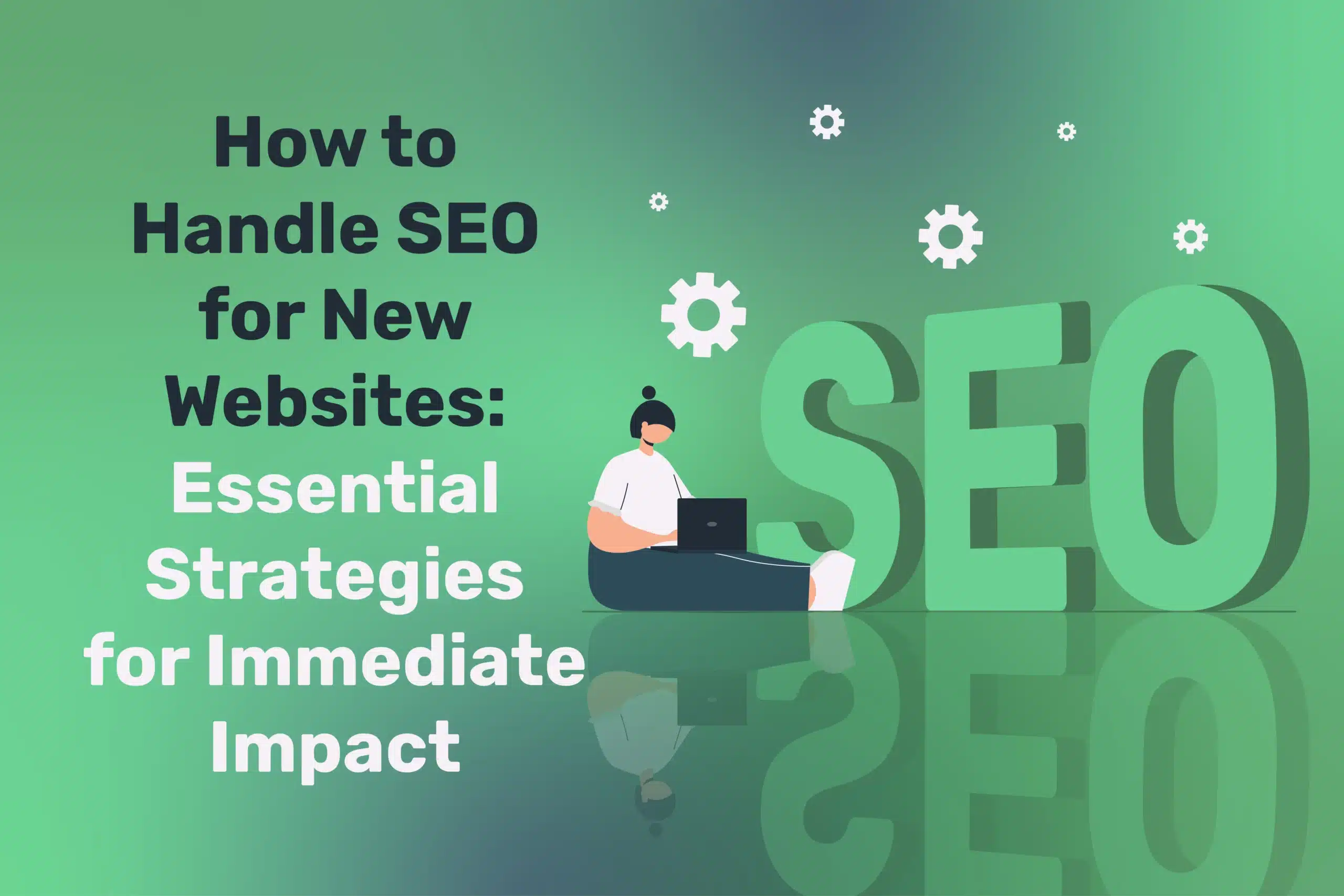
Keyword Research Essentials: How to Find and Target Terms That Actually Convert
Table of Contents
Keywords form the bedrock of SEO: they connect user queries to relevant pages, helping potential customers discover your offerings. Yet effective keyword research in 2025 goes far beyond brainstorming a few phrases. Marketers must grasp user intent, weigh competition levels, and track the evolving search trends to select terms that truly drive results—visibility, traffic, and conversions.
This article breaks down keyword research essentials and advanced tactics—covering tools, user intent analysis, competitor insights, and best practices to ensure you’re targeting terms that yield real business value rather than empty page views.
“Keywords are stepping stones to user intent. By deciphering what people genuinely seek, you tailor content to match their needs, generating traffic that converts,” explains Ciaran Connolly, Director of ProfileTree.
Keyword Research Essentials: The Evolution
Keywords remain essential in SEO, but their role is evolving beyond exact matches. Search engines now analyse intent, context, and user behaviour to deliver more relevant results. Simply stuffing content with keywords is no longer effective—brands must focus on creating high-quality, intent-driven content that aligns with searcher needs. Adapting to these changes ensures a competitive edge in modern digital marketing, helping businesses stay visible in an increasingly AI-driven search landscape.
From Single Words to Intent-Focused Phrases
In past years, SEO specialists often fixated on single short-tail keywords (“digital marketing”). Now, it’s crucial to address long-tail or mid-tail queries (e.g., “how to create a digital marketing strategy for small business”). These terms have lower volume but often higher conversion rates, reflecting specific user intent.
Semantic Search and Context
Search engines parse synonyms, context, and user location more deeply. Instead of fixating on exact matches, produce content answering related phrases. If your page comprehensively covers “email marketing for e-commerce,” Google can match you with queries about “e-commerce newsletter tips” or “best email marketing platform for small shops.”
Voice and Conversational Queries
As voice search gains traction, queries become more natural language—e.g., “Where can I find vegan recipes for quick dinners?” or “What’s the best local coffee shop?” Incorporating conversational content or Q&A sections ensures you capture these user queries.
Setting Clear Goals for Keyword Research
Effective keyword research starts with clear goals. Whether aiming for higher rankings, local visibility, or conversions, defining objectives ensures a focused strategy. Aligning keywords with business priorities helps attract the right audience and maximise SEO impact.
Determine Content Purpose
Are you optimising for brand awareness, lead generation, or direct sales? The search intent behind your keywords differs—informational, navigational, transactional. For instance, an article about “top video editing tips” addresses an informational need, whereas “buy video editing software discount code” is transactional.
Segment by Buyer Stage
Users at different buyer stages search differently. A top-of-funnel user might ask “how to choose a website host,” while bottom-of-funnel queries might be “best domain and hosting combo under £50.” Identifying keywords for each stage helps you craft targeted content across the purchase cycle.
Prioritise Conversion Potential
Not all keywords produce revenue. High-volume queries might yield lots of traffic but poor leads. Meanwhile, niche phrases—like “enterprise-level CRM for manufacturing companies”—could attract fewer clicks but high-value prospects. Balancing volume with relevance fosters optimal ROI.
Tools for Comprehensive Keyword Discovery

A variety of tools can streamline keyword research, uncovering valuable opportunities. Platforms like Google Keyword Planner, Ahrefs, and SEMrush help identify search volume, competition, and trends. Using multiple tools ensures a well-rounded strategy for targeting high-impact keywords.
Google Keyword Planner
Google Keyword Planner is a go-to tool for estimating search volume, competition, and discovering new keyword opportunities. While primarily designed for Google Ads, it provides valuable insights into monthly search trends and suggested terms. To make the most of it, combine its data with tools like Google Trends or historical analytics to refine keyword choices based on seasonality, user intent, and emerging trends. This approach helps in crafting a well-rounded SEO and content strategy.
Third-Party Platforms
SEMrush, Ahrefs, and Moz provide advanced keyword research capabilities beyond basic volume estimates. These tools offer keyword difficulty scores, competitive analysis, SERP feature tracking, and insights into global vs. local search volumes. Additionally, they help identify “keyword gaps”—areas where competitors rank but your site does not—revealing valuable content opportunities. Leveraging these insights allows for more strategic targeting and better-informed SEO decisions.
People Also Ask and Related Searches
Google’s “People also ask” (PAA) boxes or SERP bottom “related searches” reveal user sub-queries. For instance, searching “vegan recipes” might yield “budget-friendly vegan meals,” “30-minute vegan dinner.” Integrate these as content sections or new blog topics.
AnswerThePublic and Other Idea Generators
Tools like AnswerThePublic visualise question-based queries (how, why, which, can). For voice search or Q&A-style content, these prompts can spur entire article outlines. Thoroughly exploring these variants ensures you capture a wide user net.
Competitor Analysis
Plug competitor domains into keyword tools. Evaluate their top organic phrases, check if you can produce better content for those queries. Identify any “content gaps”—high-value terms they’re ignoring. This synergy uncovers new angles.
Analysing Keyword Metrics
Evaluating keyword metrics is crucial for choosing the right targets. Factors like search volume, competition, and keyword difficulty help determine potential impact. Prioritising keywords with a balance of relevance and attainability ensures an effective SEO strategy.
Search Volume
Higher volume can mean broader awareness but also stiffer competition. Low volume might still convert well if it aligns with a specialised offer. Don’t ignore modest-volume terms if they perfectly match your niche.
Keyword Difficulty
Tools assign a “KD” or similar index reflecting how challenging it is to rank on page one. If you’re a smaller site, aiming for extremely high-difficulty terms might be unwise. A balanced approach—mixing moderate difficulty with long-tail, lower-competition terms—yields quicker wins.
CPC (Cost Per Click)
Though primarily for paid search, CPC can hint at commercial intent. A higher CPC often signals advertisers’ willingness to spend on those queries because they yield sales. Hence, a high CPC keyword might be more competitive but can also produce better leads.
Click-Through Rate Potential
Some SERPs contain featured snippets or knowledge panels that reduce organic clicks. If a query is thoroughly answered at the top of the page, users might not click further. Tools or SERP observation can reveal if ranking #1 is truly beneficial or overshadowed by a snippet. Adjust strategy accordingly.
Grouping and Organising Keywords

Structuring keywords into relevant groups enhances SEO efficiency. Categorising them by intent—informational, navigational, or transactional—helps tailor content. Organised keyword clusters also improve internal linking and content strategy, boosting overall search performance.
Logical Clusters
Instead of tackling each keyword individually, group them by theme or intent. E.g., “website security tips,” “website security software,” and “how to prevent website hacking” form a cluster around site security. Create a pillar page covering the broad topic and sub-pages for specific angles.
Mapping to Content Strategy
Align each cluster to existing or planned content: product pages, blog posts, videos, or FAQ sections. This structured approach ensures each keyword set is systematically addressed. Over time, you can see which clusters drive the most traffic or conversions, refining your editorial calendar.
Avoiding Keyword Cannibalisation
When two pages compete for the same keyword, they dilute ranking potential instead of strengthening it. To avoid this, consider merging them into a single, authoritative resource or clearly differentiating their focus. For example, one page could target beginners with foundational insights, while another delves into advanced strategies for professionals.
Crafting Content for User Intent
Aligning content with user intent ensures relevance and engagement. Whether users seek information, comparisons, or transactions, tailoring content to their needs improves rankings and conversions. A strategic approach boosts both SEO performance and user satisfaction.
Understanding Intent Categories
- Informational: “What is a VPS server?”
- Navigational: “Facebook login page,” “SEMrush website”
- Transactional: “Buy running shoes online,” “hire a digital marketing agency”
- Commercial Investigation: “Best running shoes for overpronation,” “digital marketing agency reviews”
Focus on matching your content style (educational, product listing, comparison) to the relevant intent.
Answering Queries Thoroughly
If a user searches for “how to fix a slow WordPress site,” offer detailed, step-by-step instructions with supporting visuals like screenshots or tutorial videos. A well-structured, in-depth guide encourages longer dwell time, social sharing, and boosts your page’s credibility in Google’s eyes.
Incorporate Subheadings and Q&A
Segment content with relevant subheadings (H2, H3) that reflect the long-tail queries you discovered. Possibly embed a short FAQ section at the bottom, addressing People Also Ask style questions. This structure helps search engines parse your content for snippet opportunities.
Encourage Engagement
Prompt readers to comment with additional questions, or link to related articles. Engagement signals (time on page, comments, shares) can indirectly improve ranking. A compelling CTA guides them to another stage of the funnel—like a product demo or free trial.
“Aligning content to real user questions is pivotal. Don’t just stuff keywords; provide meaningful, thorough answers that convert casual searchers into loyal visitors,” notes Ciaran Connolly.
On-Page Optimisation Tactics
Optimising on-page elements like title tags, meta descriptions, headers, and internal links enhances search visibility. Proper keyword placement, fast-loading pages, and mobile-friendly design improve rankings and user experience. Structured content also boosts engagement and conversions.
Title Tag and Meta Description
Place primary keywords near the start of the meta description whenever possible, but ensure the text remains natural and engaging. The meta description should serve as a compelling, concise pitch that highlights the page’s value, enticing users to click. Incorporate action-oriented language or a call to action (CTA) to drive engagement—for example, “Discover 10 proven steps to boost your rankings today.” A well-crafted meta description not only improves visibility in search results but also increases click-through rates by clearly addressing user intent.
Header Tags
Use an H1 tag for the page’s main title, ensuring it includes your primary keyword and accurately reflects the page’s topic. Subheadings (H2, H3) should incorporate secondary or related keywords to reinforce relevance and improve readability. This structured hierarchy not only enhances user experience but also helps search engines understand the content’s flow, making it easier to rank for multiple related terms.
URL Structures
Short, descriptive URLs are best—e.g., “example.com/running-shoes/best-for-overpronation” rather than “example.com/2398hf873.” Reflect core keywords without overstuffing. If multiple subtopics exist, use subfolders or relevant slugs accordingly.
Image Alt Text
Don’t ignore media. If your page includes visuals, add alt text referencing the keyword context. For instance, an infographic about “SEO audits” might have alt text: “Infographic showing a 10-step SEO site audit checklist.” This practice aids accessibility and slight SEO benefits.
Tracking Keyword Performance and Adjusting
Regularly monitor keyword rankings, traffic, and conversions using tools like Google Search Console and SEMrush. Identify trends, refine underperforming keywords, and adjust content or SEO strategies to stay competitive and maximise results.
Monitoring SERP Rankings
Use rank trackers to monitor daily or weekly keyword movements and identify trends. Pay attention to universal search results like featured snippets, local packs, or image carousels that could impact visibility. If a competitor starts ranking higher, analyse their content, structure, and SEO tactics to refine your approach and reclaim your position.
Analysing Organic Traffic in Analytics
Compare traffic to specific landing pages with targeted keywords. Check bounce rates and conversions. A page ranking #3 might yield more conversions than a #1 spot if it nails user intent. Continually refine content or CTAs for higher ROI.
Refreshing Outdated Content
Keep content fresh, especially if you target queries prone to updates—like “best SEO tools 2025.” Updating published dates, stats, and examples can nudge Google to crawl again and maintain rank. Satisfied repeat visitors may also keep the piece alive in shares or backlinks.
Seasonal or Trend Surges
Some keywords experience seasonal spikes, such as “Christmas gift ideas” in winter or “summer holiday tips” in warmer months. Tools like Google Trends and historical analytics help anticipate these patterns. Plan content in advance, refresh existing posts, and strategically re-promote to maximise visibility during peak interest periods.
Avoiding Keyword Research Pitfalls

Many businesses make the mistake of chasing high-volume keywords without considering relevance or competition. Avoid keyword stuffing, neglecting long-tail opportunities, or ignoring search intent. A strategic, well-balanced approach ensures sustainable SEO success.
Obsessing Over High Volume Alone
Pursuing a high-volume keyword with 100k monthly searches might be futile if competition is too intense and the traffic doesn’t convert. Focus on keyword intent and difficulty—attracting qualified visitors is far more valuable than chasing vanity metrics.
Over-Stuffing Keywords
Keyword stuffing is archaic and penalised. Maintain a natural density, focusing on synonyms or topic coverage. Google’s semantic understanding means you don’t have to repeat the exact phrase constantly—explain thoroughly, using varied terminology.
Neglecting Branded Terms
If your brand has strong traction, target brand-related searches like “YourBrand pricing” or “YourBrand vs Competitor.” Optimising for these queries ensures users find accurate, official information rather than unflattering third-party content or competitor-driven comparisons.
Failing to Evolve
Keyword popularity shifts. Terms you targeted last year may fade. Tools might unearth new variants or trending synonyms. Regular re-checking ensures your content remains aligned with actual user language.
“Effective keyword strategies remain fluid. As language trends or user interests shift, adapt to stay at the forefront of relevant queries,” says Ciaran Connolly.
Future Outlook: Semantic, AI-Driven Keyword Research
Keyword research is evolving with AI and semantic search. Search engines now prioritise context, user intent, and natural language processing. Future strategies will rely on AI-driven tools that predict trends, understand deeper meanings, and personalise results, making keyword research more dynamic and precise.
Advanced NLP Tools
In 2025, more SEO professionals are leveraging AI-powered content assistants, like ChatGPT, to refine keyword strategies. These tools generate diverse variations of target phrases and identify latent semantic indexing (LSI) terms, ensuring broader topic coverage. This accelerates content creation while enhancing relevance and search visibility.
Voice Search Eclipsing
With the rise of voice search, conversational key phrases are becoming more prominent, often replacing traditional short-tail queries. To stay ahead, websites should incorporate natural, question-based sections—such as a dedicated “YourBrand Answers” page or structured FAQ blocks. This approach helps capture voice-driven traffic and improve overall search visibility.
Real-Time Trend Tracking
Some platforms now stream real-time data on social or search topics. Tying your editorial calendar to these immediate surges can yield quick wins in SERPs. If the trending topic aligns with your brand’s domain, producing a timely piece can push you into top positions fast.
Hyper-Personalised SERPs
As search engines refine personalised results based on user history and demographics, traditional keyword volume metrics may become less reliable. To stay competitive, focus on building broad topic authority and fostering user trust. This approach increases the likelihood of appearing in searches across different user personas, regardless of shifting algorithms.
Cultivating a Keyword Strategy That Drives Conversions
In an era where user intent and semantic context matter as much as raw search volume, keyword research is both a science (data analysis, competitor metrics) and an art (interpreting human needs). By comprehensively exploring terms, grouping them into content clusters, and producing in-depth answers aligned with search intent, you attract visitors genuinely interested in your offerings.
Remember to prioritise conversion-friendly keywords, maintain natural on-page optimisation, and track performance meticulously. Regularly revisiting your strategy ensures you remain aligned with shifting language trends, emerging competitor pages, or expansions in your product lines. Ultimately, the right keywords bridge your brand’s solutions to the queries users type or voice every day—transforming search traffic into loyal customers.




